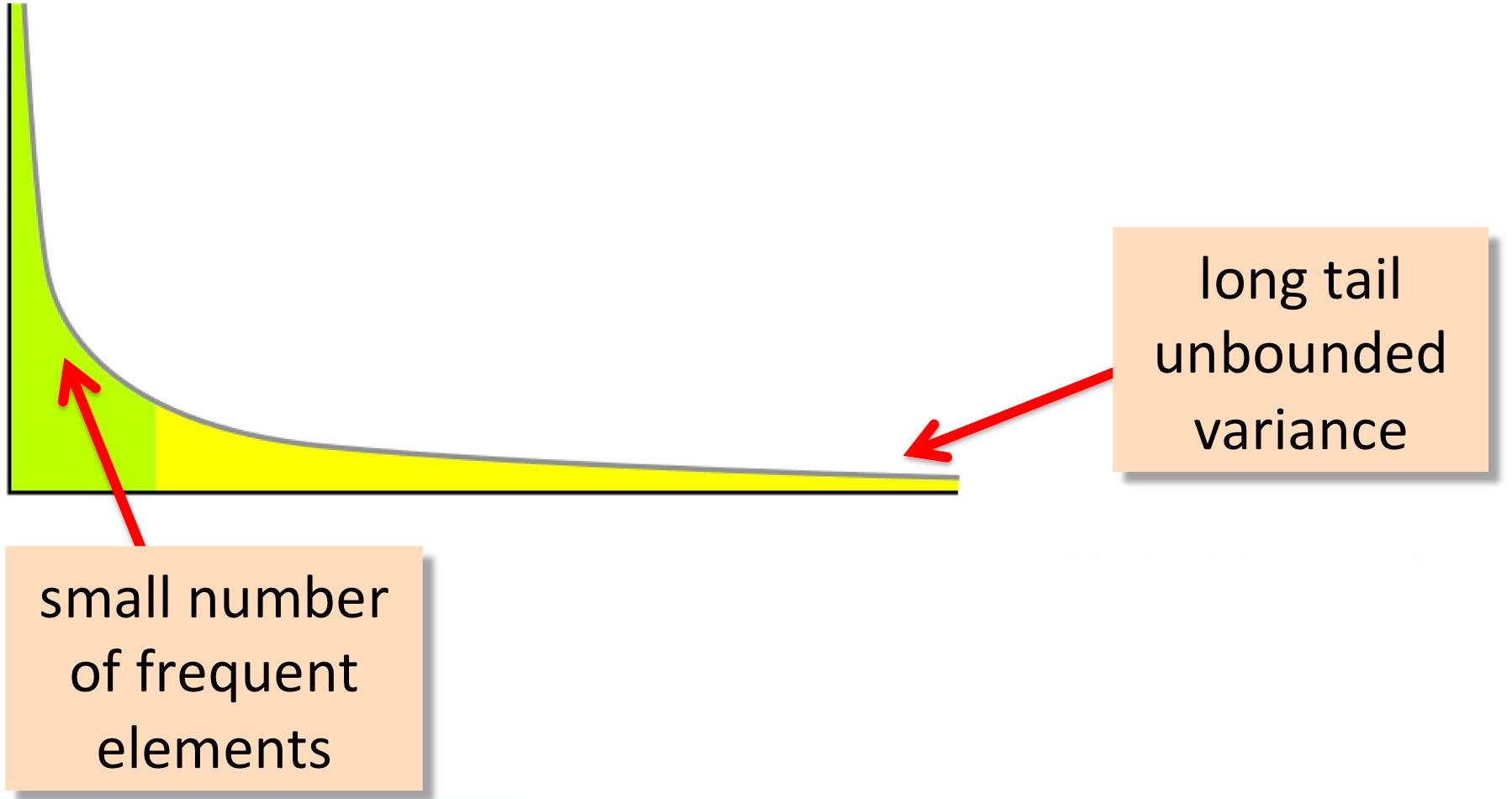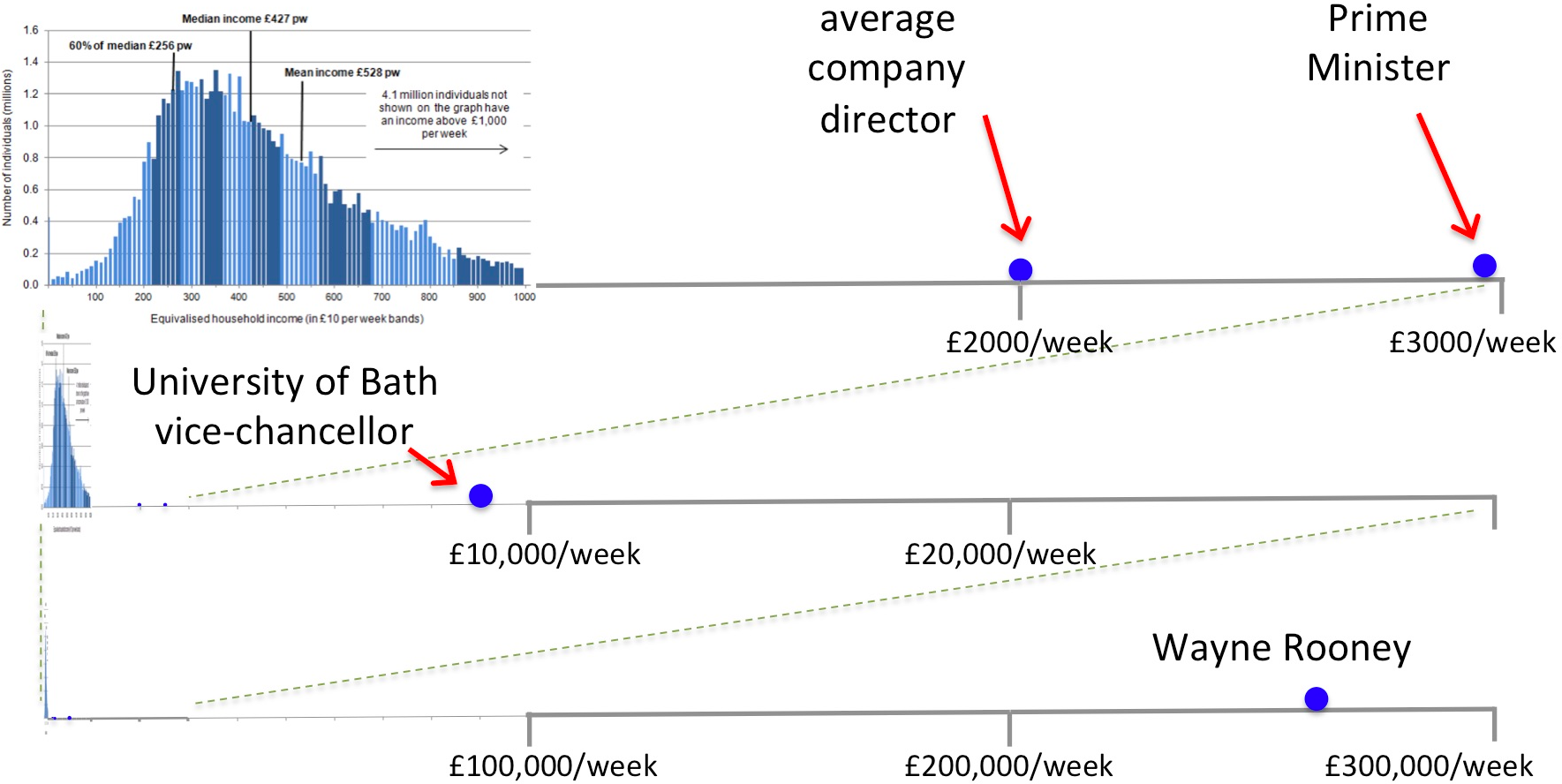A long-tail distribution is a form of probability distribution or empirical histogram of values, where the number of extremely large elements may be sufficient to make a major difference to common measures such as the mean or standard deviation.
A common example of a long-tailed distribution is the power-law distrubution often encountered in network data such as social media connections or web links. The income distrubution in most societies are less extreme than the power law, and usually has a well-defined mean but still has effectively unbounded variance.
Note that some distributions such as the Normal distribution may have a long tail in the sense that there is the potential for a few very large values, but these values are exteremely rare, so have little impact on aggregate measures such as the mean.
Used in Chap. 7: pages 96, 100; Chap. 8: page 113; Chap. 10: page 139

Long-tail distribution

Long tail of large incomes. Source: Statistics for HCI~\protect\cite{dix2020stats}, adapted from Office of National Statistics~\protect\cite{ONS14}